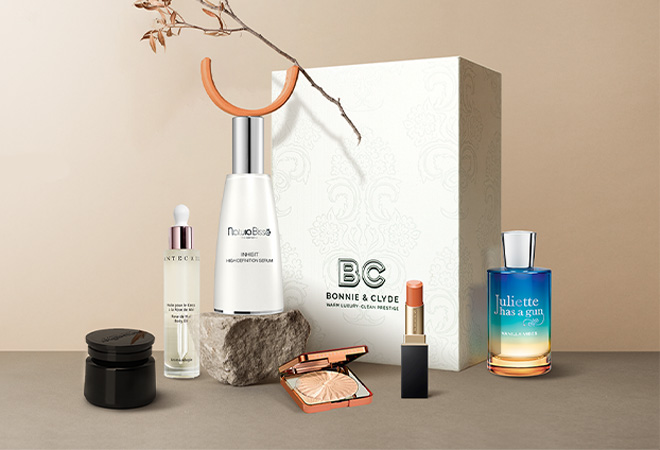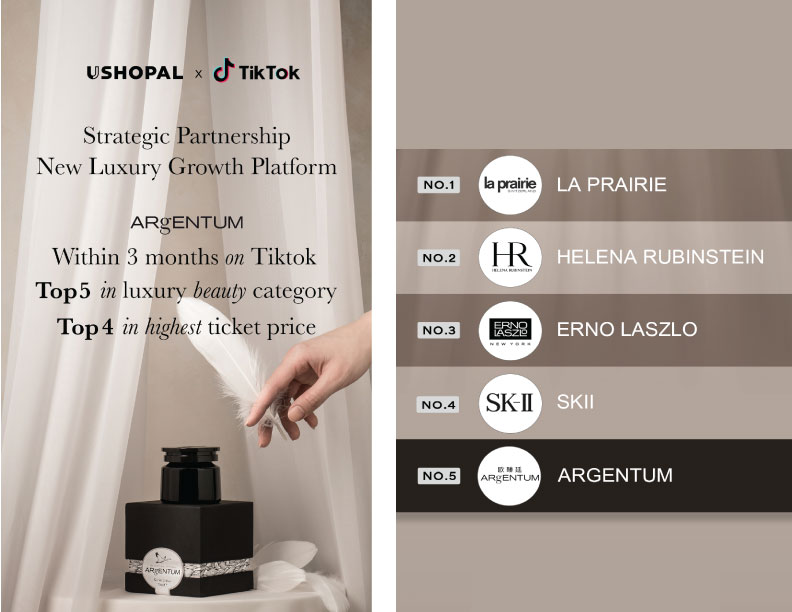The new beauty trend in the US has been hyper-focused on "affordable luxury" and the premiumization of mass, with Target and Walmart becoming the hottest retail launch partners. Convenient for consumers and providing scale for brands is compelling, but delivering a "luxury" experience—that's just not going to happen.
As is often the case, the trend in China is very different. If you want a view into the future of beauty retail, look East, where the rise of multi-brand beauty stores is pushing the boundaries of design, delivering fresh, innovative, and connected retail experiences. According to data from iResearch, the market size of China's multi-brand beauty stores will be 41.9 billion yuan ($6.6 billion) in 2020. Among them, the new multi-brand beauty store market share is expected to increase to 15.8% in 2023, and market size is expected to reach 13 billion yuan ($2 billion). Coupled with this is the emergence of Beauty as the second-largest category within the global Personal Luxury market, after Leather Goods, and ahead of Apparel. Let there be no mistake about it, China’s role in luxury beauty’s leadership position is undisputed.
Experiential Omnichannel Multi-Brand Luxury Beauty Retail
Bonnie & Clyde is one of these innovative retailers pushing the envelope of shopping for beauty beyond the constraints of the physical four walls of brick-and-mortar. Owned by the USHOPAL Group, Bonnie & Clyde has established a market-leading position in the luxury beauty retail sector servicing the covetable 28- to 34-year-old demographic, which makes up 65% of its consumer base. For Bonnie & Clyde, omnichannel is more than a buzzword.
With a user base of 10MM+ high-net-worth and high-income consumers, Bonnie & Clyde leads the multi-brand beauty retail space. William Lau, CEO of Bonnie & Clyde, said of their consumers, “They seek differentiation, and brands with values that they identify with. Through this we’ve developed one of the highest consumer loyalty platforms within the industry.”

Bonnie & Clyde is known by young consumers in China for its frictionless omnichannel model and a covetable assortment of global beauty brands like Chantecaille, Natura Bisse, Suqqu, and Juliette Has A Gun. The integration of a “6+365” license allows consumers to try cross-border products in-store, purchase online through Bonnie & Clyde's mini-program, and receive purchases within four hours in Shanghai and 24 hours across China.
“The days of separating online and offline retailing are over. With the fragmented shopping and social ecosystems, brands need to be where customers are, and drive contextual engagement,” Lau shared. “From in-store offline professional salons, art gallery events, to retail livestreaming, we co-develop creative brand content which maximizes conversion without relying on promotions. Whether the customer chooses to buy within store, or shopping at night on their phone with our Beauty Advisors, we are able to capture them at every touchpoint."
What constitutes luxury can certainly be subjective and is often driven, in the most simplistic definition, by price point, perception, and packaging but, in truth, luxury brands are much more but you know it when you see it.
The meaning of luxury continues to become more diversified and contextual. Claudia D'Arpizio, partner at Bain & Company, said, "Where once it was all about status, logos, and exclusivity, luxury brands are now actors in social conversations, driven by a renewed sense of purpose and responsibility."
Bonnie & Clyde has a long-term strategy of traditional luxury brand-building based on exclusivity, consumer connection, and delivering memorable experiences. Short-term tactics like promotions and discounting are simply not in their playbook. Their customer-centric model built on customer service and engagement powered by technology has created a playbook for future international brand partners. The Bonnie & Clyde and USHOPAL luxury ecosystem is comprised of highly curated brand partners, an army of influencers, and a highly engaged beauty community. They have secured a significant share of the domestic luxury beauty market in China with their stores sitting comfortably next to Hermès and Chanel.
Sharing insight into the coveted Gen Z consumer, Lau says, “The luxury Gen Zer is what I call the ‘Best of Everything’ generation. Short attention spans, along with a thirst for all things new and trending, makes brand loyalty hard to come by.
“The opportunity brands must be able to capture is their desire of constant learning and the demand for differentiation. What we find within many of our VIP members is they’ve leapfrogged the traditional masstige brands, jumping directly into niche beauty brands that have equally or superior efficacy, and with brand identity values they can identify with.”
The Superpower of Content Creation
Millennials and Gen Z customers are critical growth levers for the luxury sector in 2022 whose influence will only accelerate in the coming years, set to account for 70% of the luxury market by 2025 and contribute 130% of luxury market growth. These next-gen affluent consumers are rewriting the luxury playbook with their value-driven expectations and digitally native lifestyles.
Customer-centricity and relevancy have never been more important as consumers demand seamless cross-channel experiences and always-on convenience. Bonnie & Clyde's superpower is connecting to millennial and Gen Z consumers.
“Content commerce is at the core of every engagement. By co-creating beautiful brand assets and viral social topics, we are able to combine brand values with community interest tribes,” Lau said.
The ultimate beauty curators have nurtured a community of 5,000+ super-luxury, micro-community leaders, generating highly targeted, creative content to share the next generation of luxury beauty brands and meet these digitally native, content-creating consumers where they are—online.

The BC Studio team works with brands and KOLs for luxury gifting to create deep content collaborations powered by proprietary order and AI profit-sharing technology; this program also identifies and drives high-value conversion for its portfolio of brands. The average monthly sales per store are $3 million RMB (approximately $465K) while the average ticket value (ATV) is the highest among multi-brand beauty stores in China at 5,000 RMB ($775).
Strategic Partnership with TikTok
Doubling down on content, the retailer has formed a strategic partnership with TikTok’s beauty team to develop a new Gen Z luxury beauty growth platform consisting of three pillars.

The first is the creation of the Beauty Content Coalition of handpicked KOLs tapped to develop branded content for TikTok. In the first three months, more than1,000 unique pieces of content were created by the coalition, driving an ATV of $1,200, with Natura Bissé commanding the highest price ever sold on TikTok for beauty by selling out of its $2,600 Beauty Valentines Giftbox within 30 minutes—without the use of discounting to drive conversion.

Bringing top-tier coalition KOLs to physical Bonnie & Clyde stores across China every week is the second pillar. This integration of physical and digital experiences allows the brand team and trainers to create a more immersive broadcast, creating deeper engagement than simple livestream selling. With categories like perfume, traditionally thought to be more offline driven, the team was able to combine in-store live-streaming, bringing French luxury perfumery Juliette Has A Gun to No.1 in the luxury perfume category.
The final pillar of the platform is to build permanent BC Select Luxury Beauty zones with the most influential celebrities in China to integrate content and unique offers into the daily social engagement of the celebrities with their fans.

Lau said, “We invested in British niche luxury skincare brand Argentum Apothecary. Within three months of launching on TikTok and through the partnership, Argentum became one of the top five brands in the beauty category, reaching the top four spot in terms of ticket prices.”
The Future of Luxury Beauty Retail
The global luxury beauty sector will reach $69 billion by 2025, according to the Bain Altagamma 2021 luxury study. Beauty is the second-largest category within the global Personal Luxury market, after Leather Goods, and ahead of Apparel. China's luxury market continued double-digit growth trends in 2021, putting the country on pace to become the world's largest luxury market by 2025.
Bonnie & Clyde will double its footprint on the mainland from six locations to 12 by the end of this year with locations in top luxury malls, including Changsha IFS and Chengdu IFS. The company is also focused on the very lucrative travel retail market, partnering with China's largest duty-free group, CDF, and launching its full portfolio of brands at the newest duty-free at Beijing Daxing Airport WFJ, and will cover four duty-free locations across Beijing, Shanghai, and Hainan.
In 2022, "Despite the macro challenges, we anticipate 100% year-on-year growth as we ramp up stores, digital communities, and increase assortment with clean, sustainable brands and partners. Also, consumer enhanced loyalty programs and in-store services, and improved last mile delivery experience. Bonnie & Clyde's commitment to ongoing enhancements to our renowned luxe shopping experience to continue to serve our avid Gen Z and millennial shoppers who depend on Bonnie & Clyde for the ultimate curated beauty shopping experience," said Lau.
Bonnie & Clyde has secured a significant share of the domestic luxury beauty market in China. Their customer-centric model built on customer service and engagement powered by technology and digital advancements has created a playbook for future international brand partners.